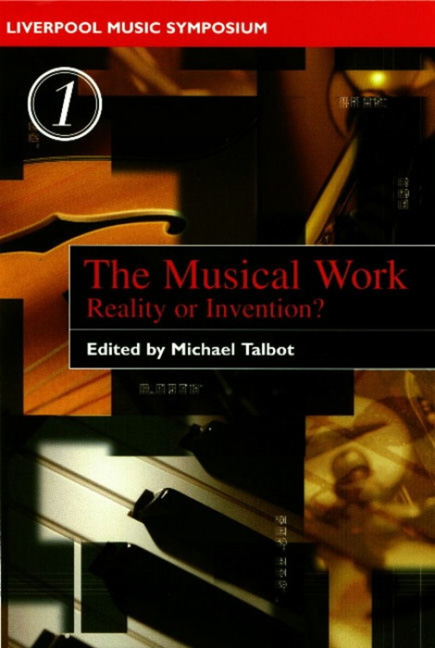Book contents
- Frontmatter
- Contents
- Notes on Contributors
- Introduction
- 1 Some Thoughts on the Work in Popular Music
- 2 Intertextuality and Hypertextuality in Recorded Popular Music
- 3 Work-in(g)-Practice: Configurations of the Popular Music Intertext
- 4 Work and Recordings: The Impact of Commercialisation and Digitalisation
- 5 The Practice of Early-Nineteenth-Century Pianism
- 6 Looking Back at Ourselves: The Problem with the Musical Work-Concept
- 7 ‘The Work’: An Evaluative Charge
- 8 The Work-Concept and Composer-Centredness
- 9 The Musical Artwork and its Materials in the Music and Aesthetics of Busoni
- 10 Re-composing Schubert
- 11 ‘On the Problems of Dating’ or ‘Looking Backward and Forward with Strohm’
- Index of Musical Compositions and Collections
- Index of Personal Names
10 - Re-composing Schubert
- Frontmatter
- Contents
- Notes on Contributors
- Introduction
- 1 Some Thoughts on the Work in Popular Music
- 2 Intertextuality and Hypertextuality in Recorded Popular Music
- 3 Work-in(g)-Practice: Configurations of the Popular Music Intertext
- 4 Work and Recordings: The Impact of Commercialisation and Digitalisation
- 5 The Practice of Early-Nineteenth-Century Pianism
- 6 Looking Back at Ourselves: The Problem with the Musical Work-Concept
- 7 ‘The Work’: An Evaluative Charge
- 8 The Work-Concept and Composer-Centredness
- 9 The Musical Artwork and its Materials in the Music and Aesthetics of Busoni
- 10 Re-composing Schubert
- 11 ‘On the Problems of Dating’ or ‘Looking Backward and Forward with Strohm’
- Index of Musical Compositions and Collections
- Index of Personal Names
Summary
Approaches to Existing Works
It should almost be self-evident that the integrity of a musical work is something of supreme concern to composers. This can sometimes result in extreme over-reaction if a composer suspects that his or her artistic vision is in jeopardy. Perhaps, in this regard, the behaviour of Kaikhosru Sorabji in withdrawing his works from performance for decades, because he could not trust any interpreter to perform them as he wished, can be partially understood. Other composers have prefaced scores, or instructed publishers, with specific prohibitions against unauthorised ‘tampering’ with their works. The more purist generation of composers in the twentieth century might be expected to be more clearly antagonistic towards the business of arrangement and transcription of their scores. Paradoxical as it may seem, this is not completely so, for not only have several composers wished to set out their own works in multiple forms – Ravel's orchestrations of his own piano music constitute one example here, and a more extreme manifestation would perhaps be the type of musical democratisation evident in the multiple dispositions of Percy Grainger's works – but composers have also continued to take up works of others, usually of previous generations, in order to produce new compositions.
Before embarking on the scrutiny of one short operatic excerpt and two self-contained works that are all in some way ‘based’ on pre-existent music of Schubert, I want to spend a short time addressing selectively the variety of approaches and methodologies that some twentieth-century composers have adopted when confronting a musical work by another composer.
The Sympathetic Completion?
Poor Mozart, poor Schubert: if only they had had more time, what other masterpieces they could have composed! Such uncritical nonsense is sometimes heard from commentators, providing a context in which the compulsive score-finisher can flourish. There are limitless temptations in this musical world: the intriguing torso of the final Contrapunctus of Bach's Art of Fugue ; several works of Mozart (including the thorny issue of the Requiem); certain operas (Puccini's Turandot and Berg's Lulu, to name but two); and, eponymously, Schubert's‘Unfinished’ Symphony.
- Type
- Chapter
- Information
- The Musical WorkReality or Invention?, pp. 205 - 230Publisher: Liverpool University PressPrint publication year: 2000

